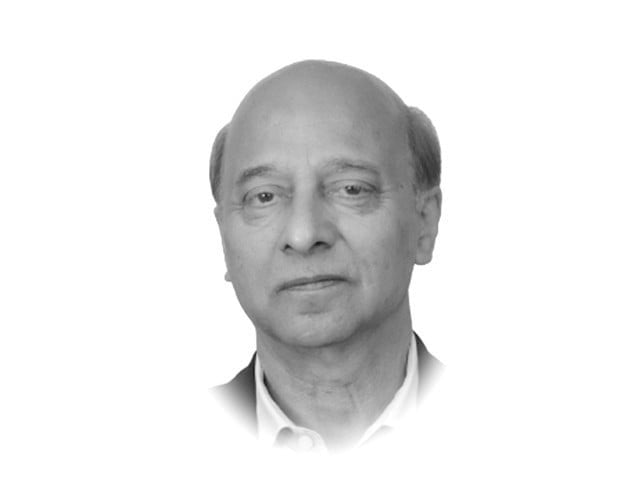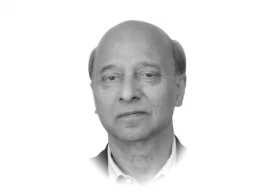
China's astronomical growth is remarkably close to a miracle for a country which the West for decades looked down upon as a closed, authoritarian and non-innovative society – good only at copying and mass-producing. China's staggering advances in telecommunication, hi-tech, batteries, renewable energy solutions, e-vehicles, AI and G-5 not only brushed aside those biases but have also catapulted the country to unprecedented levels – both economically and technologically.
The current success stemmed from sheer commitment to economic reform, honesty and openness heralded by Deng Xiaoping's rise to power in the final years of Chairman Mao Zedong.
Deng's journeys abroad exposed him to a different world. He was shocked and surprised to see how much the rest of the world had progressed and how backward China had remained. Deng realised that the communist system wasn't working. And thus the path to reform with a very pragmatic approach coupled with a vision for a better future and integrity of the top leadership.
The shocking surprise in the West prompted Deng into a reform process that remains unparalleled. India, a much-touted world's largest democracy, for example, began its reform journey almost the same time, yet the "closed society under the Communist Party" moved in leaps and bounds , leaving its neighbour far behind. India with an over 4 trillion dollars GDP remains far behind China's 18 trillion GDP. The disparity is both stark and instructive.
In retrospect, the Communist Party and its absolutely dedicated leadership – brimming with a nationalistic spirit and the zeal to catch up with the West – turned out to be the key in the process. It ensured continuity and a brute focus on implementing the collective vision for a better future.
"I don't care whether the cat is black or white, as long as it catches mice. That's what we're concerned about. So we shouldn't get stuck in the debate over socialism and capitalism," Deng used to say. "Our objective is to lift China out of poverty."
This resolve took the impoverished and looked-down-upon country to an industrial giant with a rising middle class in a world in which the rules of the game - on trade and geopolitics - were largely set by the United States in the aftermath of World War II for the benefit and stability of all.
This thinking gave birth to the notion "socialism with Chinese characteristics". This meant a marked but gradual departure from the state's dogmatic way of running the economy – through centralised planning – to a liberal management of the economic sector, albeit without losing sight of the centrality of citizens' welfare and well-being.
And the fact that Deng's reforms eventually lifted cumulatively nearly a billion people out of poverty – since the launch of the reforms in the late 1980s – is a testament to his vision and that of the party. Incentivised farming, focus on the indigenous development of key industries, and professional management of state enterprises – accompanied by indiscriminate accountability of the top executives – made all the difference as the Chinese economy began opening up.
While the Deng generation focused on the development of energy, chemical industries, steel and large-scale manufacturing on the way to self-sufficiency and export-based economy, President Xi Jinping took the mission to new levels with initiatives that have placed his country on a par with the United States, and even surpassed it in the new technologies. IT parks, super-computing, innovation in renewable energy and a brute focus on economic connectivity are what defines China today.
Both the US and China are world's AI superpowers, boast the largest naval forces, still two-way trading products worth around $600 billion, with an ever-growing narrowing of difference in their GDPs. The US GDP currently hovers around $29 trillion as against China's $18 trillion. China has emerged as the largest producer of solar energy panels, electric vehicles and transformative longer-life batteries, and has maintained an over 5 per cent growth with a staggering foreign exchange reserves topping $3.20 trillion, the highest held by any country.
Chinese tech giant Huawei, for example, is helping to accelerate digital transformation in Asia-Pacific through its suite of scenario-tailored solutions and services. Such digitalisation through G-5 and AI start-ups like DeepSeek is not only reshaping Asia-Pacific economies but also elbowing out American and European competition.
The Hangzhou-based DeepSeek has galvanised China with a great sense of pride and experts believe the firm's staggering breakthrough in building AI models cost-efficiently is set to change the country's fate. It has also busted the conventional belief that only the US leads in artificial intelligence and that no country can match or even surpass its capacity in AI development.
"DeepSeek's success did not come from a powerful state that could direct resources to where it wanted. Instead, the firm succeeded on the back of its enterprising spirit, the capabilities of a young and well-educated group of Chinese scientists, and its tech-savvy entrepreneur," wrote Zhou Xin in South China Morning Post.
Be it the rail-road network to facilitate the booming logistics and the railway network, or gigantic business and industrial zones that China has put up in the last few decades, or even the breathtaking progress in hydel-thermal and green energy – all is mind-boggling.
No surprise that China today far outweighs 30 Asian nations together including heavyweights like: Japan ($4.1 trillion), India ($3.9 trillion) and South Korea ($1.87 trillion) – the world's 4th, 5th and 12th largest economies respectively.
More than 2.9 billion people inhabit this bloc of countries, compared to China's 1.4 billion residents. The per capita GDP reveals the imbalance in productivity i.e. $12,870 for China versus $5,583 for the rest of Asia, according to the Visual Capitalist website. (More in the next piece)









1729685382-0/Untitled-design-(57)1729685382-0-270x192.webp)











COMMENTS
Comments are moderated and generally will be posted if they are on-topic and not abusive.
For more information, please see our Comments FAQ